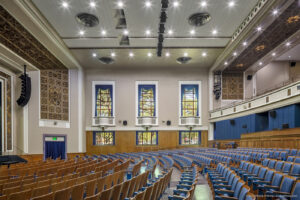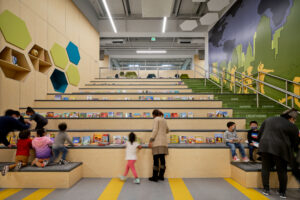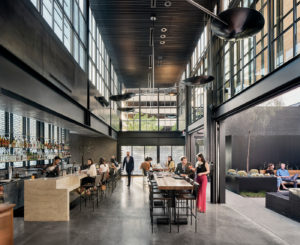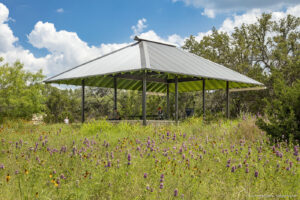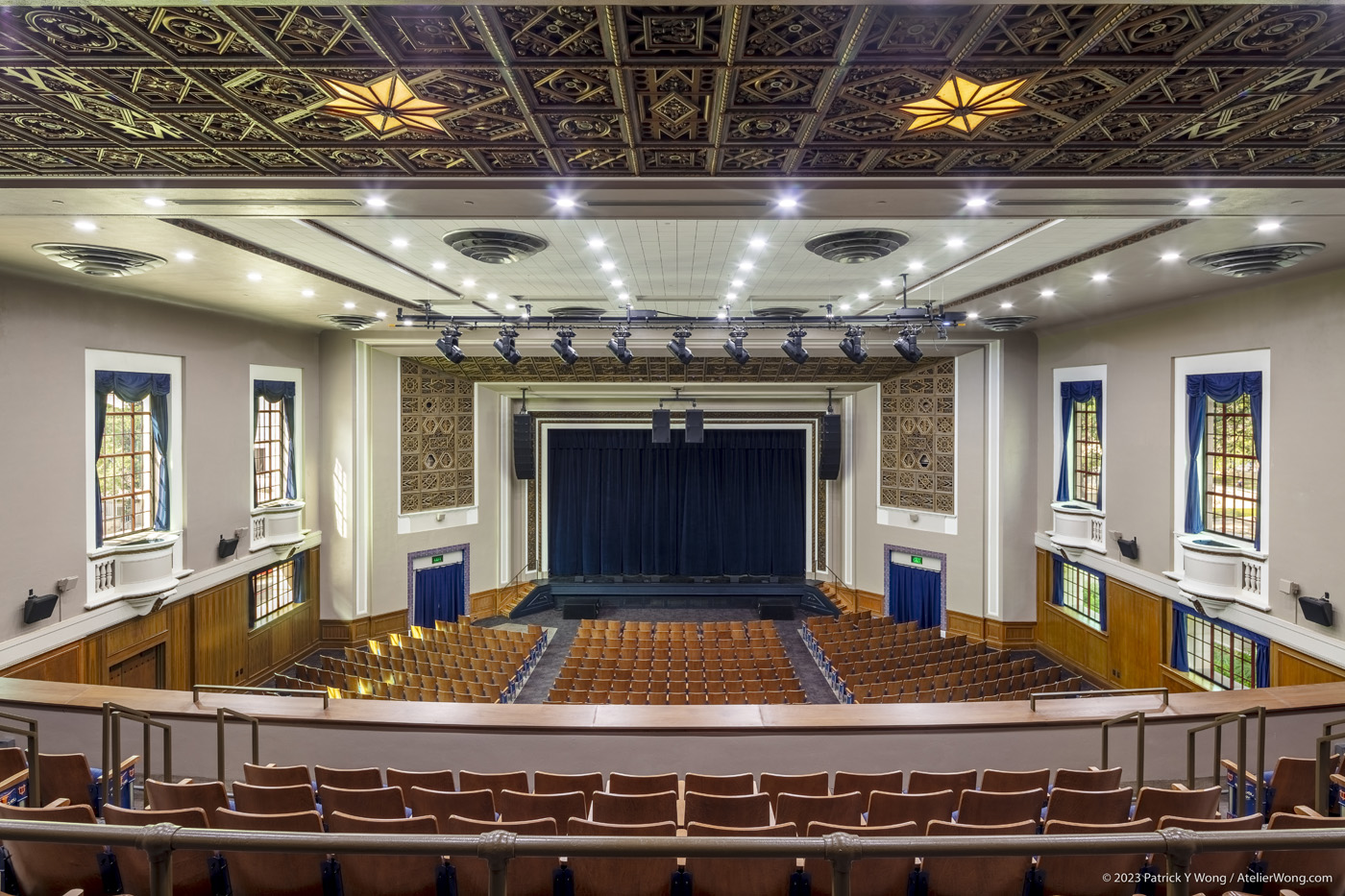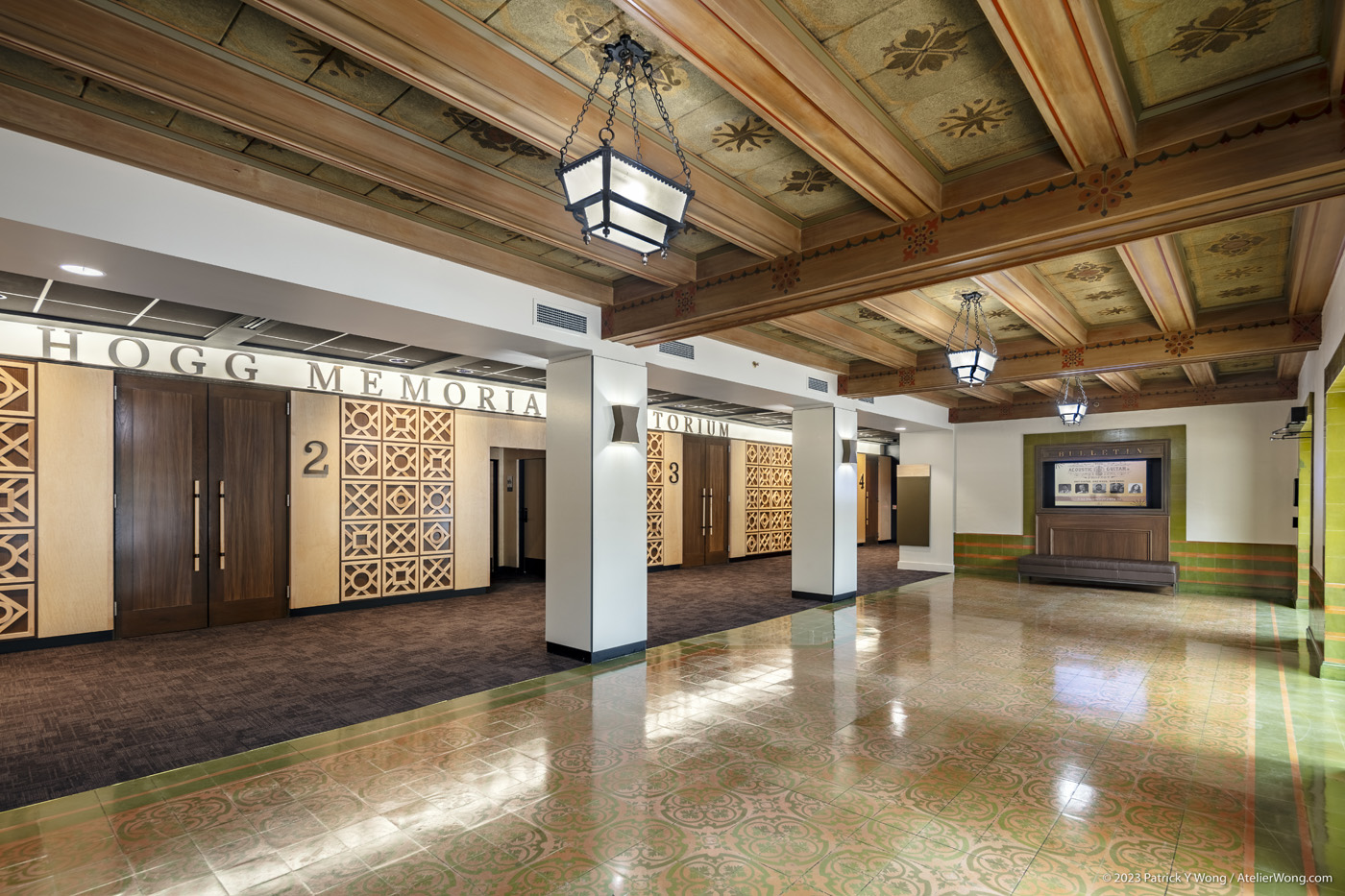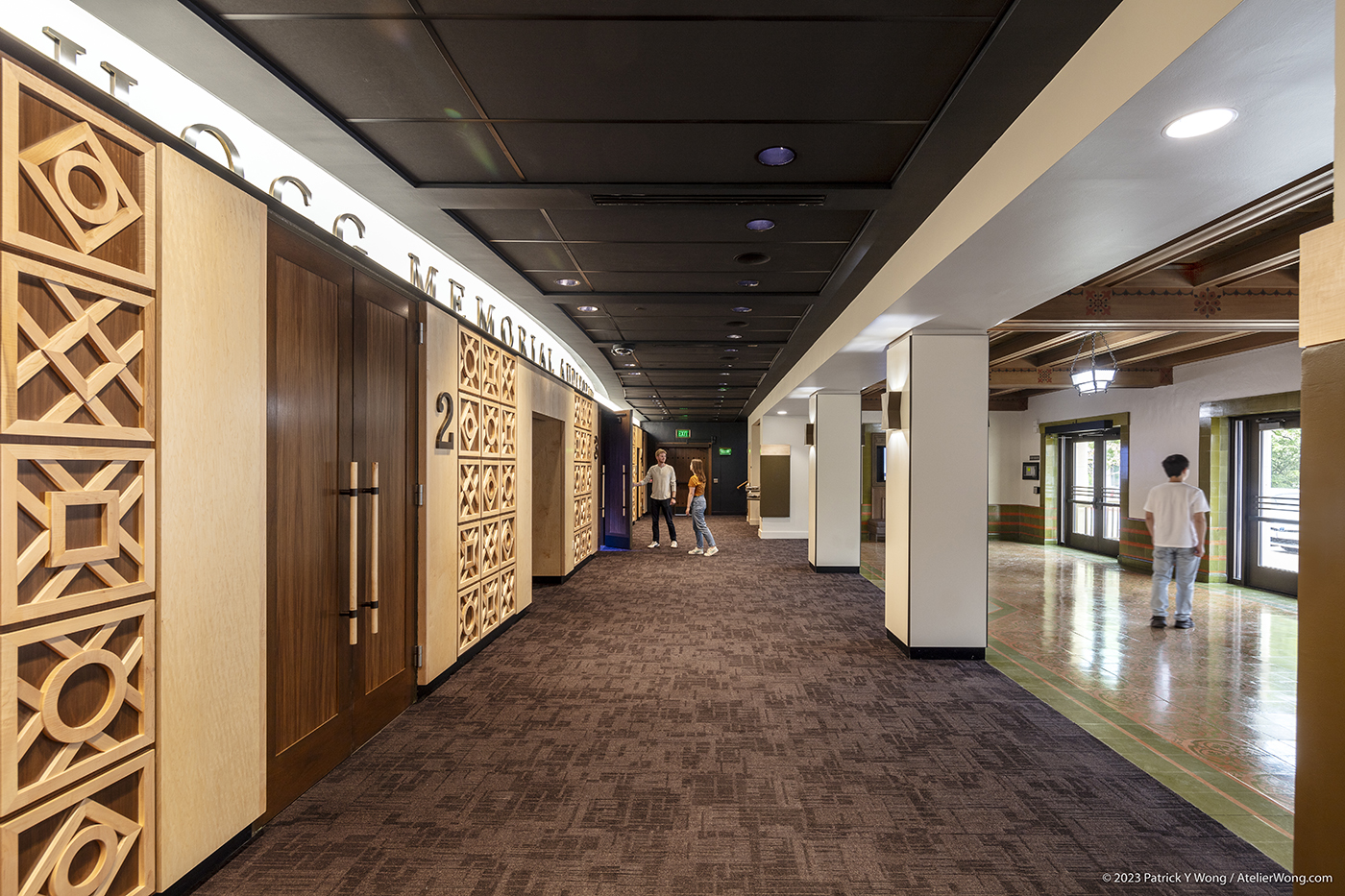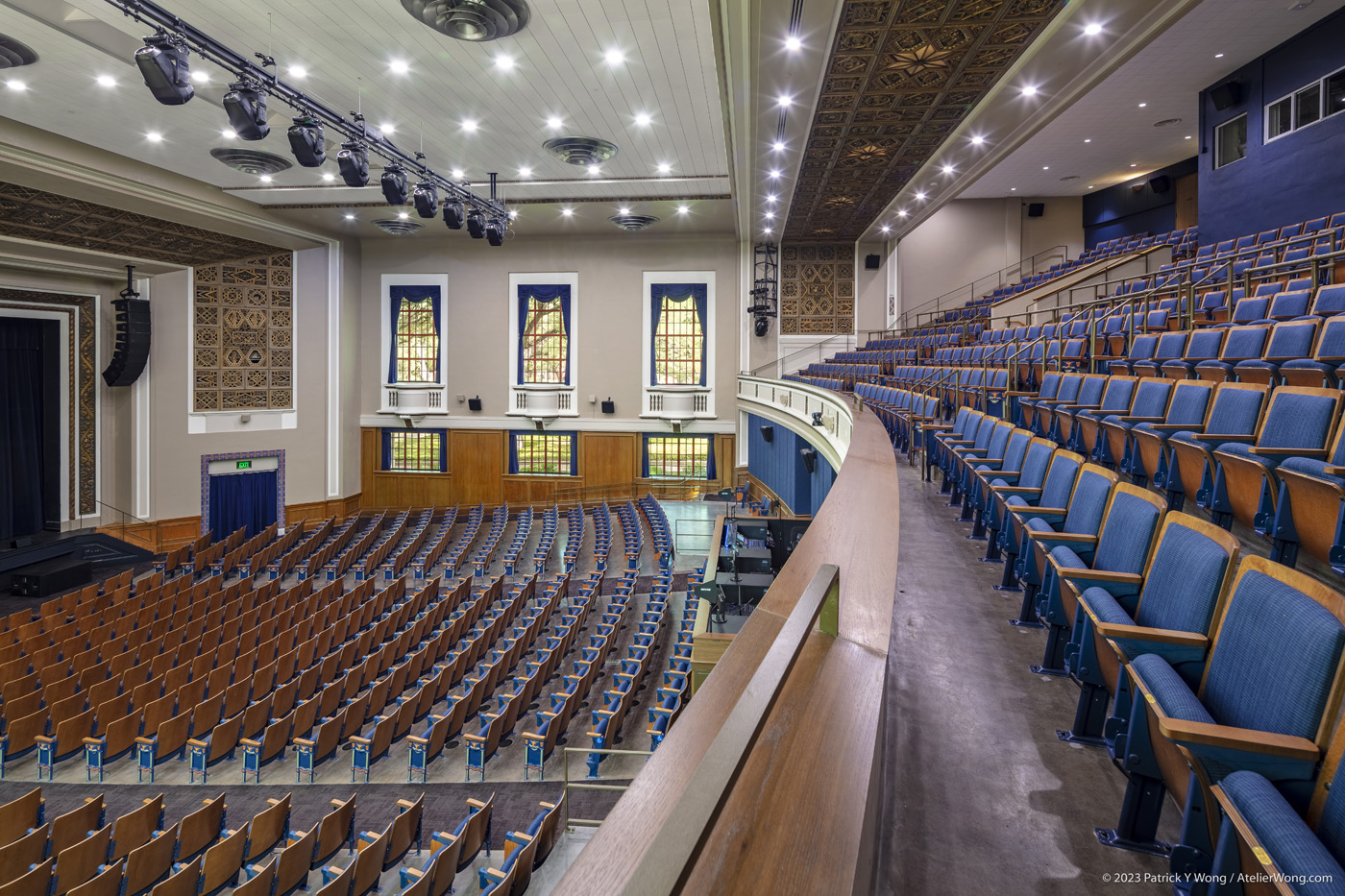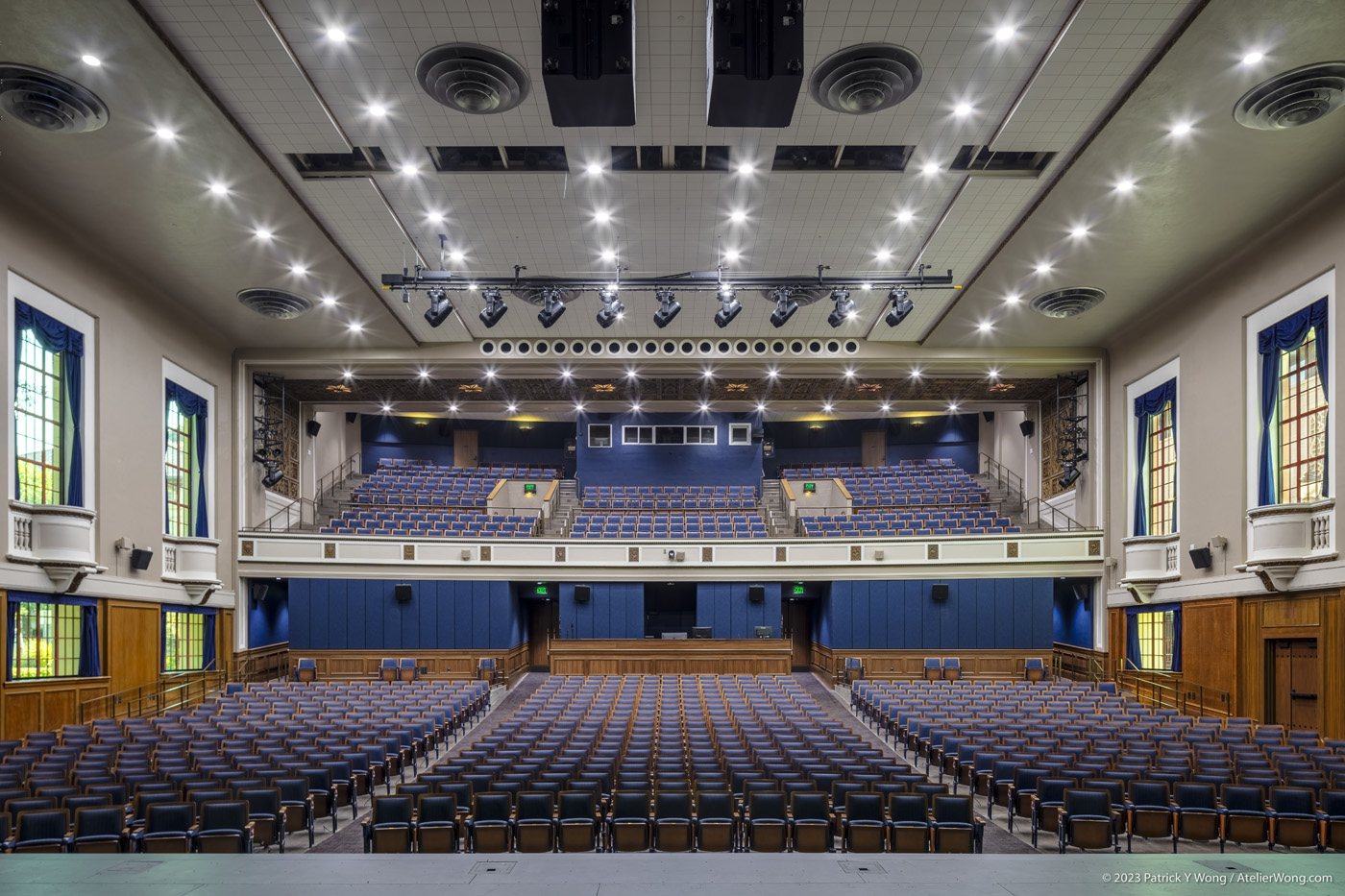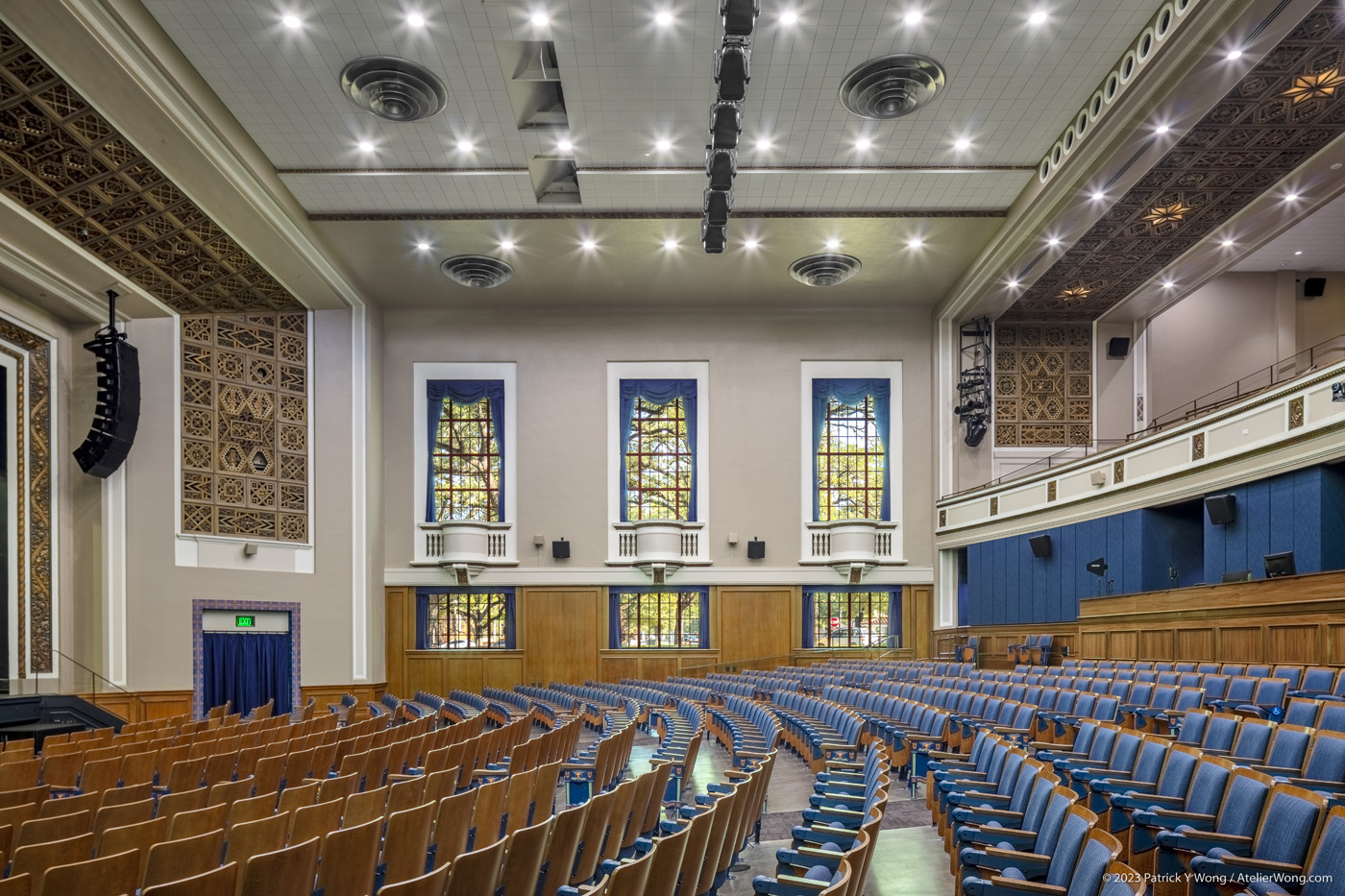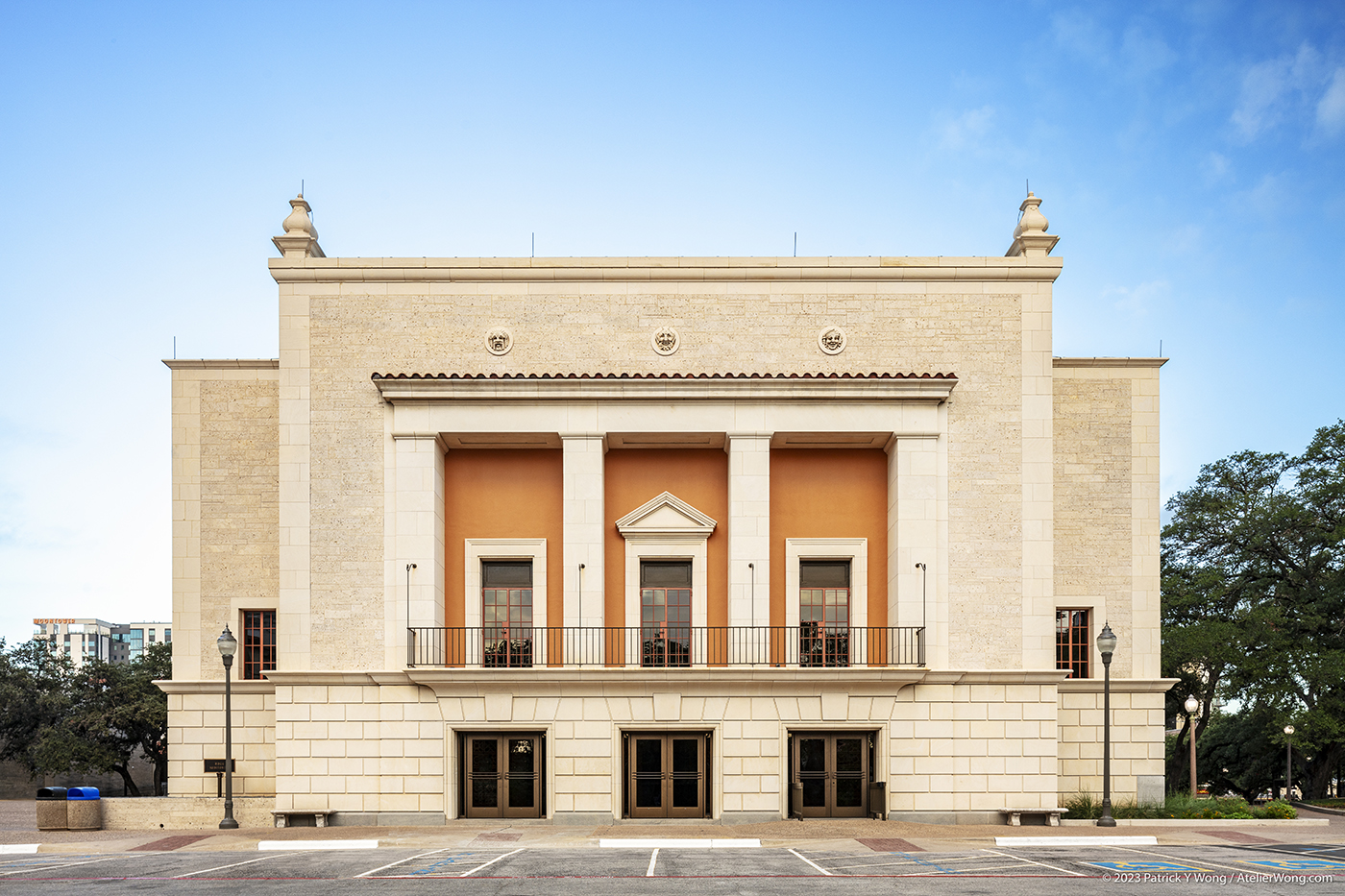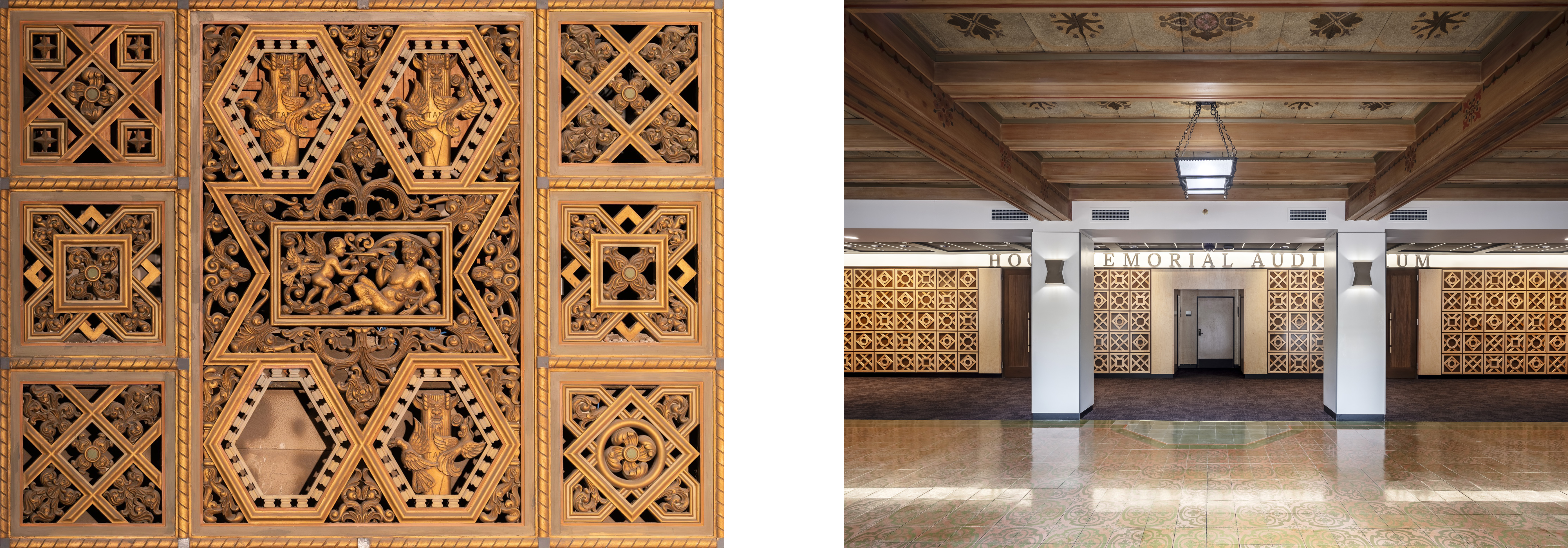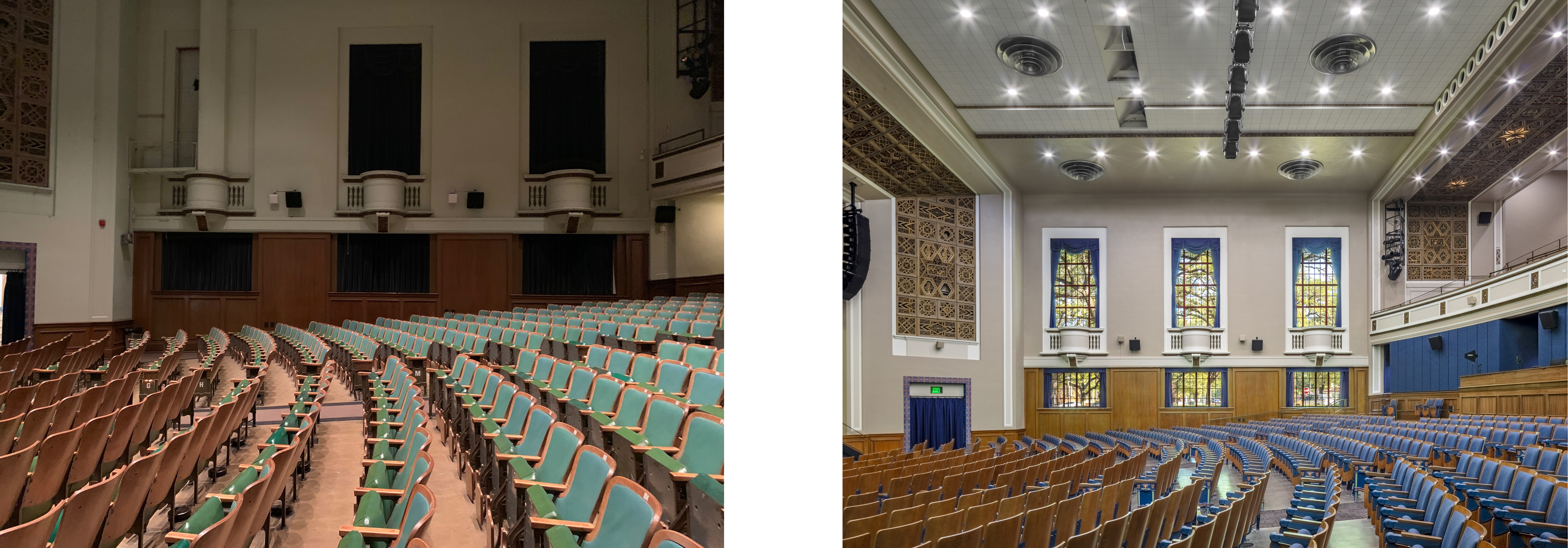Something Old, Something New, Something Borrowed, Something Blue
To realize the Owner’s vision of transforming this iconic historic structure, it was determined that more space was required for restrooms, mechanical systems, and electrical systems. Due to the historic significance of the building, preserving the exterior was a top priority, and modifying or expanding it was considered unacceptable. The additional space necessary to make the building function to modern standards would have to be found within the existing envelope.
A two-pronged approach was employed. First, auditorium space was removed, improving acoustics, reducing sight line distances, and right-sizing the seating capacity to align with the number of plumbing fixtures that could be provided in the adjacent space. Second, additional space for mechanical and electrical systems was created through excavation underneath the building.
Through this strategy, a connection was made between the timeless qualities of the building and its future, projecting hope and serendipitously evoking the wedding adage “something old, something new, something borrowed, something blue.”
-
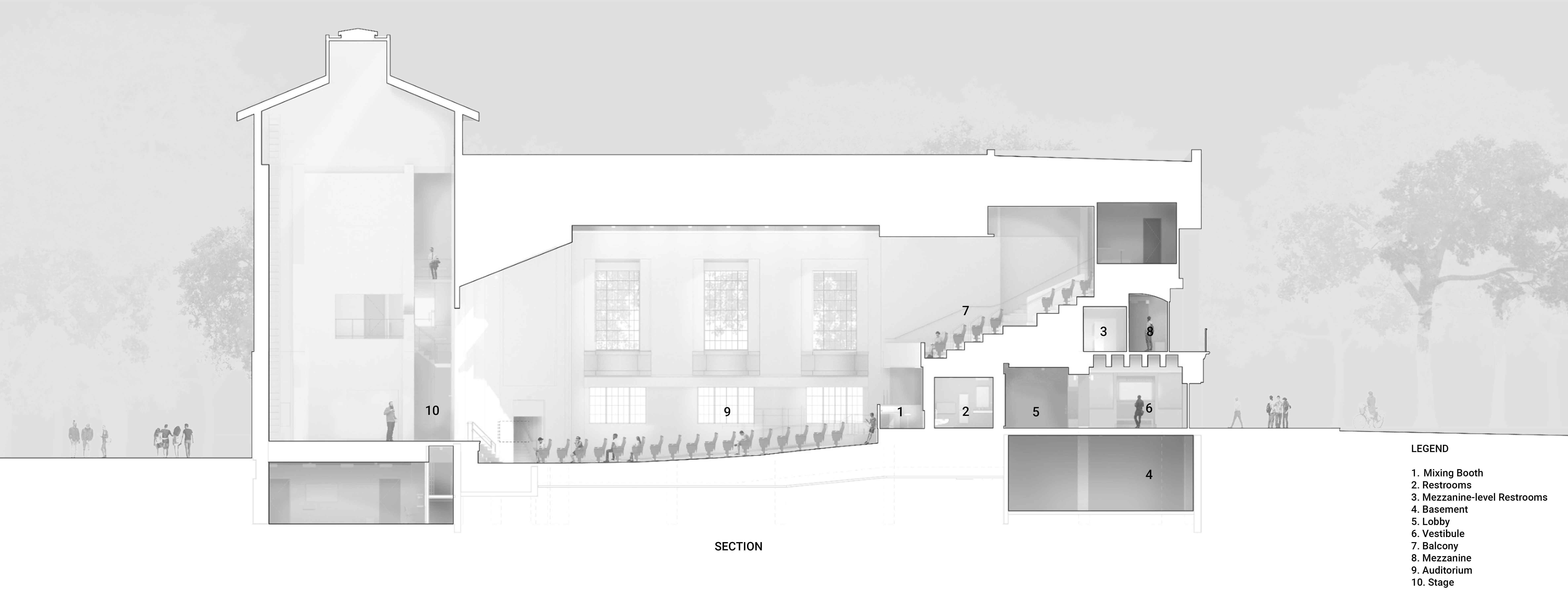
The design of auditoriums focuses on the architectural section: success lies in optimizing the acoustics ad sightlines for spectators. On the orchestra level, we transformed the space beneath the balcony overhang - which presented the most acoustic and sightline challenges - into functional areas by integrating the mixing booth and restrooms. On the mezzanine level, unused space beneath the sloped seating to introduce was recaptured for new restrooms, enhancing convenience for the patrons on the upper level. In the basement, precise excavation around existing piers and footings allowed us to expand the mechanical system without disrupting the structural integrity of the building.
-
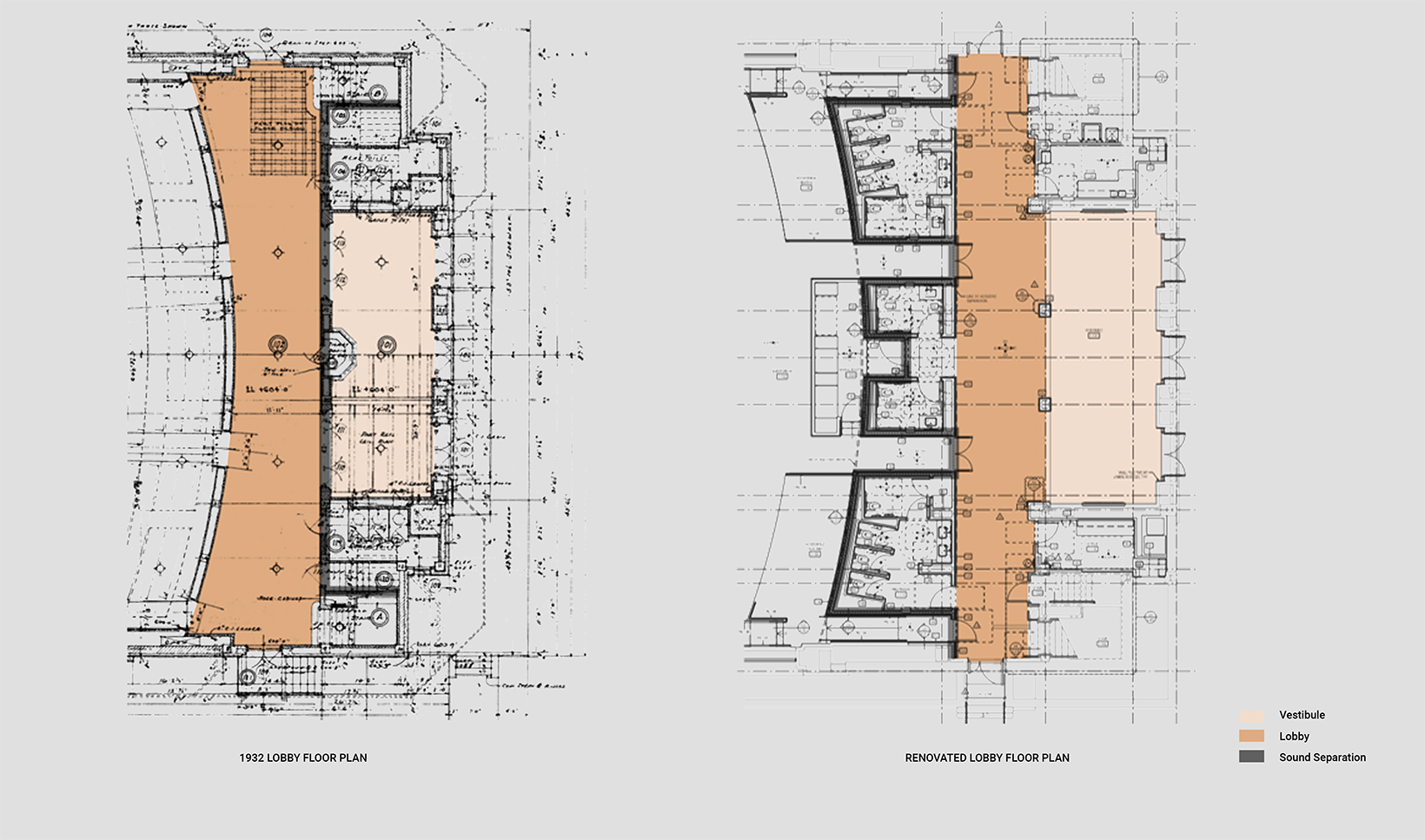
The 1932 building was designed with a small entrance vestibule and a larger lobby, with the line of sound and security separation between them. The lobby was acoustically open to the auditorium, so even minor activity there was disruptive to performances. Due to this, queuing was limited to the vestibule, which was far too small, forcing visitors to line up outside. The renovation moves the line of sound and security separation to the back wall of the auditorium, allowing the vestibule and lobby to be combined into a larger, more functional open space. This expanded area now accommodates queuing, banquets, and smaller gatherings without disturbing rehearsals or events inside the auditorium.
-

The building now offers just over 1,000 seats - a sweet spot on the UT campus between Bates Recital Hall (700 seats) and Bass Concert Hall (2900 seats). The projects 14 new restrooms align with the University's mission to provide gender-inclusive facilities, enhancing both flexibility and efficiency, particularly during high-capacity events.
-

The majority of the electrical, mechanical, and plumbing systems were housed in the basement. To avoid expanding the building's footprint, we carefully excavated beneath the structure around the existing piers and footings to enlarge the mechanical basement. Much of the work was done manually, using jackhammers and a small skid steer that was lowered through an opening in the sidewalk, allowing the project to stay within the existing space while meeting modern infrastructure needs.
